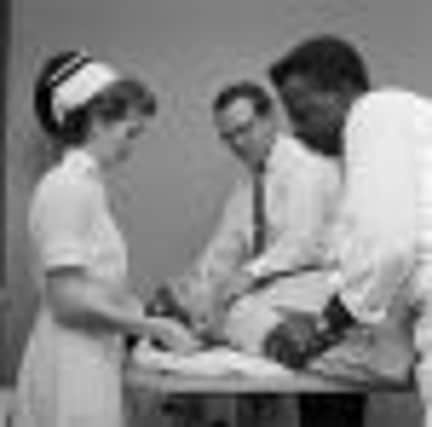Scientists unlock secrets of controversial shock therapy


Electroconvulsive therapy, or ECT, involves passing an electric shock through the brains of patients to induce seizures.
It has also been shrouded in controversy, with its use portrayed as abuse in the 1970s film One Flew Over the Cuckoo’s Nest.
Advertisement
Hide AdAdvertisement
Hide AdDespite being used around the world for more than 70 years, scientists have never understood the mechanism by which it works. However, a team at the University of Aberdeen has now shown that ECT affects the way different parts of the brain involved in depression “communicate” with each other.
They discovered that the treatment “turns down” an overactive connection between areas of the brain that control mood and the parts responsible for thinking and concentrating.
This puts a stop to the impact that depression has on sufferers’ ability to enjoy life and carry out day-to-day activities.
Professor Ian Reid, professor of psychiatry at the University of Aberdeen, who led the study, said: “ECT is a controversial treatment, and one prominent criticism has been that it is not understood how it works and what it does to the brain.
“However we believe we’ve solved a 70-year-old therapeutic riddle because our study reveals that ECT affects the way different parts of the brain involved in depression connect with one another.”
ECT treatment was introduced in 1938 by an Italian neurologist, Ugo Cerletti, who was reportedly inspired by watching pigs being stunned with electric shock before being butchered in Rome.
A total of 418 patients in Scotland received ECT in 2010, according to NHS Services Scotland. About 70 per cent of ECT patients are women, who are twice as likely to suffer from depression as men.
The study involved scanning the brains of nine severely depressed patients at Royal Cornhill Hospital, Aberdeen, before and after ECT and then applying a new mathematical method to investigate brain connectivity.
Advertisement
Hide AdAdvertisement
Hide AdAll the patients had previously failed to respond to antidepressants but all were successfully treated for severe depressive disorder following twice-weekly ECT sessions.
Prof Reid said that, despite being controversial, ECT has been shown to be effective, with eight out of ten patients recovering from their symptoms.
However, it is only used on people who need treatment quickly, such as those who are at risk from taking their own life, or have not responded to other treatments. There is also a significant risk of memory loss following the therapy.
The researchers want to compare their ECT findings with the effects of other therapies used to treat depression, such as psychotherapy and anti-depressants.
Prof Reid said: “If we understand more about how ECT works, we will be in a better position to replace it with something less invasive and more acceptable.
“At the moment only about 40 per cent of people with depression get better with treatment from their GP. Our findings may lead to new drug targets which match the effectiveness of ECT without an impact on memory.”
Professor Christian Schwarzbauer, chair in neuroimaging at the University of Aberdeen, devised the mathematical method for analysing the brain’s connectivity used in the study.
He said this method could also be applied to a wide range of other brain disorders, such as schizophrenia, autism and dementia.
Advertisement
Hide AdAdvertisement
Hide Ad“It may lead to a better understanding of the underlying disease mechanisms and the development of new diagnostic tools,” he said.
The research is published in the journal Proceedings of the National Academy of Sciences.